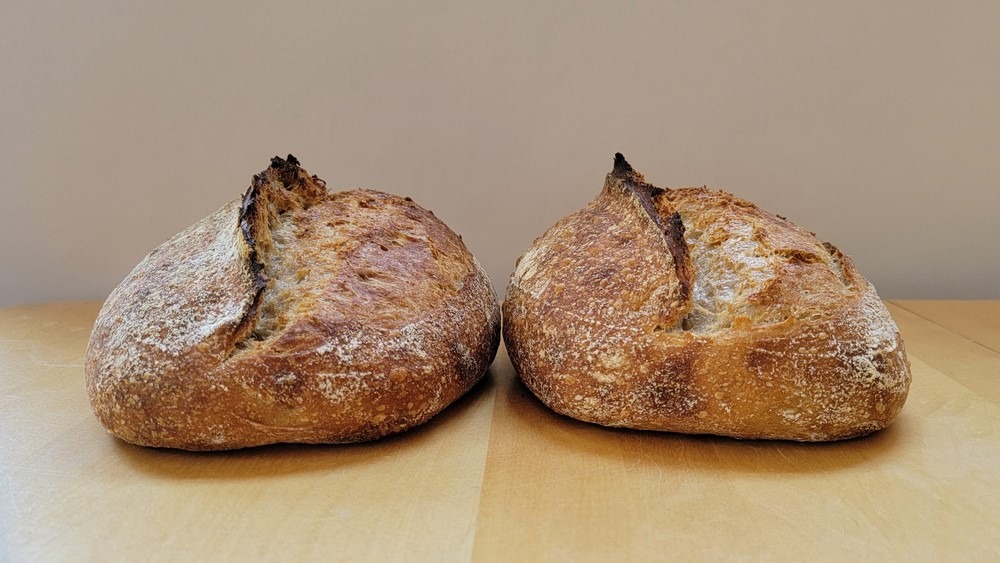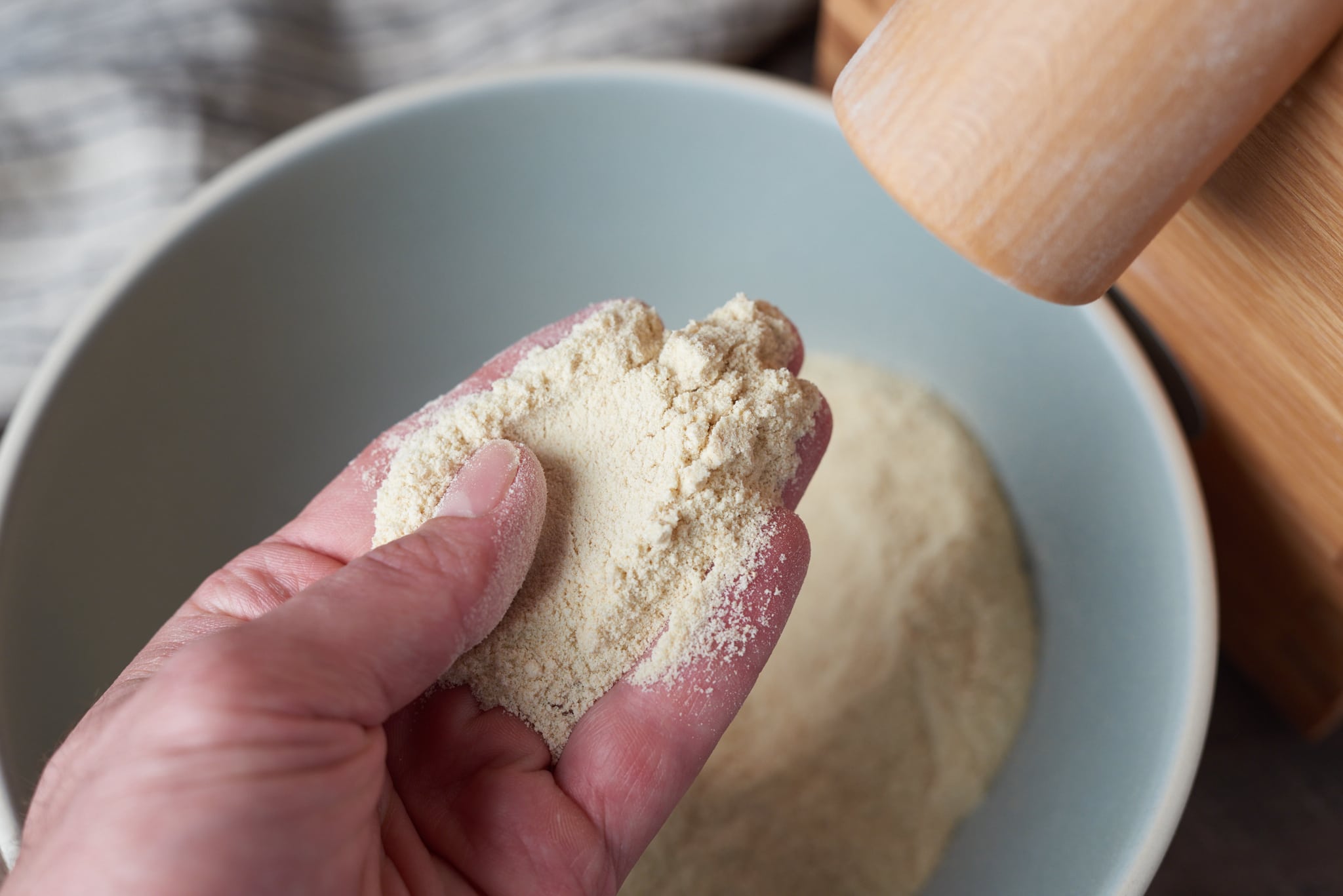Welcome bread enthusiasts, bakers, and carb connoisseurs alike! Today, we embark on a journey into the world of artisan baking, where dough rises, flavors deepen, and the battle between sourdough and yeast bread rages on. Join us as we slice through the crusty debate, knead out the differences, and butter up the truth about these two beloved bread varieties. So grab a loaf (or two) and let’s get baking!
Benefits of Using Sourdough Starter in Artisan Baking
So you want to take your artisan baking game to the next level? Look no further than using a sourdough starter! This magical concoction of flour and water not only adds flavor complexity to your bread but also offers a host of benefits that will have you churning out Instagram-worthy loaves in no time.
First off, using a sourdough starter means you can say goodbye to those pesky packets of yeast. No more worrying about whether your bread will rise or if you accidentally killed off your store-bought yeast with water that was too hot. With a sourdough starter, as long as you remember to feed and nurture it, it will always be ready to help your bread reach its full potential.
Plus, the natural fermentation process that occurs with sourdough starters not only creates a deeper, more complex flavor in your bread but also makes it easier for your body to digest. That means you can enjoy your delicious artisan loaves without feeling like you swallowed a brick afterwards.
And let’s not forget about the bragging rights. Nothing impresses your friends and family more than casually dropping into conversation that you made your own sourdough starter from scratch. It’s like having your own little pet that helps you create mouthwatering bread – what’s not to love?

Key Differences Between Sourdough and Yeast Bread
So you think all bread is created equal, huh? Well, think again! There are some that set them apart and make them totally unique.
First off, let’s talk about the ingredients. Sourdough bread is made using a starter, which is a mixture of flour and water that has been fermenting for days (or even weeks!) This gives sourdough its distinct tangy flavor and chewy texture. Yeast bread, on the other hand, uses - you guessed it – yeast! This gives it a light, fluffy texture and a more neutral flavor.
Next up, let’s discuss the rise. Sourdough bread takes its sweet time to rise, thanks to the natural yeast and bacteria in the starter. This slow rise process results in a more complex flavor profile and a chewier crust. Yeast bread, on the other hand, rises quickly thanks to the addition of commercial yeast. This gives it a more uniform texture and a softer crust.
Lastly, let’s talk about versatility. Sourdough bread is a bit more finicky to make, requiring a bit more attention and patience. Yeast bread, on the other hand, is a bit more forgiving and can be whipped up in a few hours. So, if you’re looking for a challenge, go for the sourdough. But if you’re in a time crunch, stick with the trusty yeast bread.
The Role of Fermentation in Developing Flavor Profiles
Fermentation is like the MVP of the flavor game. Without it, our taste buds would be stuck in a sad, bland world. So, let’s give a round of applause to those tiny microbes working hard to make our food taste amazing.
Through the magic of fermentation, ordinary ingredients transform into extraordinary flavors that tickle our taste buds and make our mouths water. It’s like a culinary symphony orchestrated by bacteria and yeast, turning ingredients into flavor bombs that explode in our mouths.
Imagine a world without cheese, beer, or chocolate. That would be a flavorless wasteland. Thanks to fermentation, we can enjoy a wide range of delicious foods and beverages that add excitement to our everyday meals.
So, next time you savor that tangy sourdough bread or sip on a refreshing kombucha, remember to thank fermentation for its role in developing those mouth-watering flavor profiles that make life a whole lot tastier.

crumb“>Techniques for Achieving the Perfect Crust and Crumb
When it comes to baking the perfect loaf of bread, achieving the ideal crust and crumb is an art form. To help you on your quest for bakery perfection, here are some techniques you can try:
- Preheat your oven to the hottest setting possible. A hot oven is key to achieving that crispy crust we all love.
- Use a baking stone or a cast iron skillet in the oven to help create steam. This will give your bread that beautiful, crunchy exterior.
- Try the “no-knead” method for a chewy, open crumb. Simply mix the ingredients together and let the dough sit for an extended period of time. It’s like magic!
Don’t forget to score your bread before baking. This will help control the rise of the dough and create a gorgeous pattern on the crust. Plus, it’s a fun way to feel like a professional baker!
Experiment with different flours to achieve the perfect texture. Whether you prefer a light and airy crumb or a dense and hearty one, there’s a flour out there for you. Don’t be afraid to mix things up and see what works best for your taste buds.

Incorporating Whole Grains and Specialty Flours in Artisan Breads
When it comes to baking artisan breads, the possibilities are as vast as the oceans. But if you want to take your creations to the next level, why not incorporate whole grains and specialty flours into your dough?
Whole grains like spelt, rye, and quinoa add a depth of flavor and texture that is unmatched. Plus, they are packed with nutrients and fiber, making your bread not only delicious but also good for you. And let’s not forget about specialty flours like buckwheat, chestnut, and teff. These unique flours bring a whole new dimension to your loaves, with their nutty, earthy flavors.
Experimenting with different combinations of whole grains and specialty flours is like being a mad scientist in the kitchen. Mix and match flours to create your own signature blend that will have everyone lining up at your door for a taste. Don’t be afraid to get creative and push the boundaries of traditional bread making.
So why settle for ordinary when you can bake extraordinary? Incorporate whole grains and specialty flours into your artisan breads and watch as your creations become the talk of the town. Your taste buds (and your friends) will thank you!
Tips for Maintaining a Healthy Sourdough Starter Culture
So, you’ve decided to venture into the world of sourdough baking and are now the proud owner of a bubbly, wonderfully fragrant sourdough starter culture. Congratulations! Now, let’s talk about how to keep that little guy happy and healthy.
First things first, make sure you’re feeding your sourdough starter regularly. Treat it like you would a pet (minus the walks and vet bills). Feed it a mixture of flour and water at least once a week, or more frequently if you’re using it often. Remember, a hungry starter is an unhappy starter.
Another tip for maintaining a healthy sourdough starter culture is to keep it in a cozy environment. Sure, your starter might not mind the cold draft from the window, but it’ll definitely appreciate a warm spot in your kitchen. Find a cozy corner away from direct sunlight and fluctuating temperatures to keep your starter cozy and content.
Lastly, don’t forget to give your starter some love and attention every now and then. Talk to it, sing to it, maybe even give it a cute nickname. Who knows, maybe your sourdough starter will reward you with extra bubbly loaves and that perfect tangy flavor you’ve been craving. Happy baking!
FAQs
What exactly is the difference between sourdough and yeast bread?
Well, my friend, let me tell you - the key difference lies in the leavening agents used. Sourdough bread relies on wild yeast and lactobacilli bacteria, giving it that signature tangy flavor. Yeast bread, on the other hand, uses commercial yeast to make it rise. It’s like sourdough is the rebellious teenager of the bread world, while yeast bread is the trusty, reliable sibling.
Why do some bakers prefer using sourdough over yeast?
Ah, the age-old question! Bakers who swear by sourdough often rave about its complex flavor profile and unique texture. Plus, there’s something so satisfying about nurturing your own sourdough starter – it’s like having a pet that you can eat. Yeast bread, on the other hand, is like the fast-food version of bread baking – quick, easy, but lacking that depth of flavor.
Can you share any artisan baking techniques that are specific to sourdough bread?
Oh, absolutely! Artisan bakers love to get their hands dirty (figuratively, of course) when it comes to sourdough. Techniques like autolyse (letting the dough rest before kneading), stretch and fold, and bulk fermentation are all ways to develop those delicious flavors and textures that make sourdough so special. It’s like a workout for your dough – who knew baking could be so strenuous?
Is there a noticeable difference in the final product between sourdough and yeast bread?
Oh, you betcha! Sourdough bread tends to have a chewier crust, larger air pockets, and that distinctive tanginess that sets it apart. Yeast bread, while delicious in its own right, usually has a softer crust and finer texture. It’s like the difference between a rustic, handcrafted pottery mug and a mass-produced Ikea plate – both have their merits, but one definitely stands out more.
Are there any tips for beginners looking to try their hand at artisan baking with sourdough?
Absolutely! First and foremost, don’t be afraid to get your hands dirty and experiment. Start by creating your own sourdough starter (it’s easier than it sounds, I promise), and don’t be discouraged if your first few loaves aren’t perfect. Baking is a journey, not a destination – embrace the process, enjoy the smells wafting from your oven, and most importantly, have fun with it!






